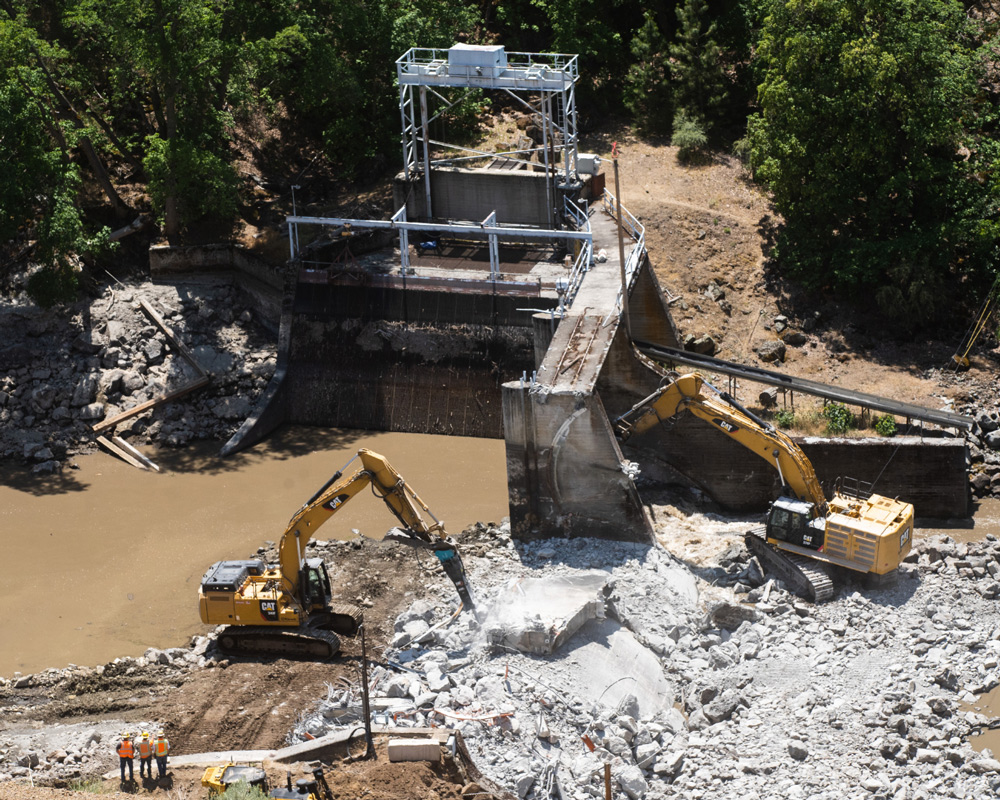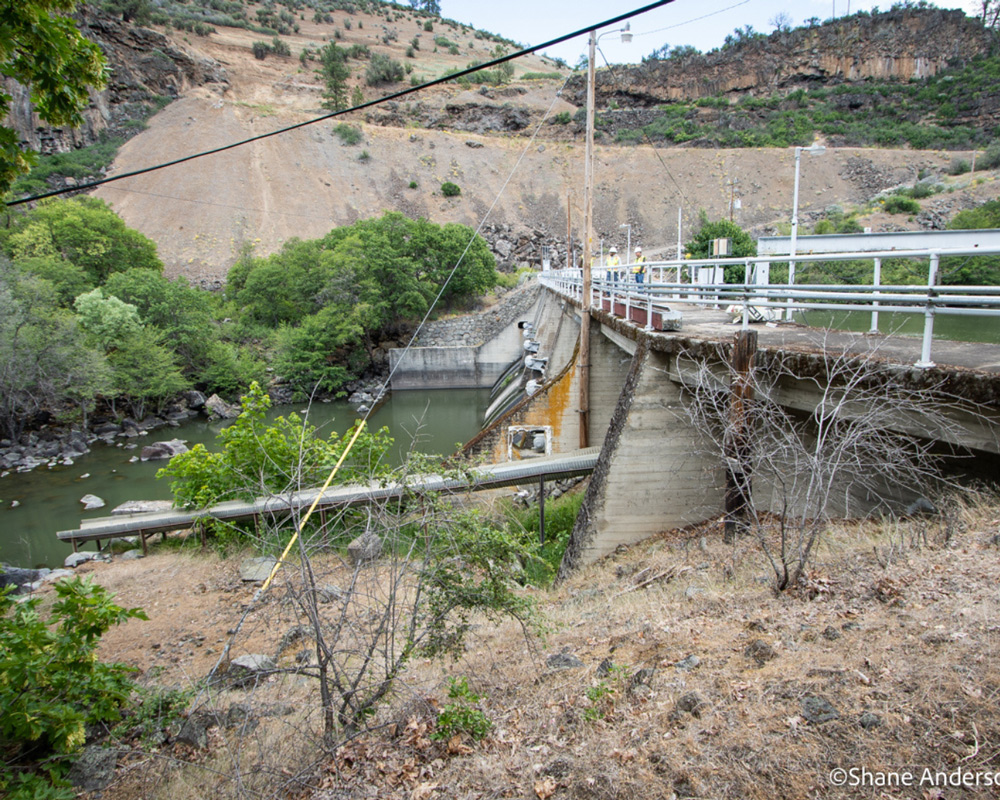Copco 2 Deconstruction Begins on Klamath River
We are thrilled to hear that deconstruction for removal of Copco 2, the first of four lower dams slated to be removed on the Klamath River, is underway!
Update from the Klamath River Renewal Corp:
The deconstruction of Copco No. 2, the smallest of the four hydroelectric dams being removed from the Klamath River, is underway. This week, crews removed the gates, walkway, and two of the five bays down to the spillway. This work was done to direct waters around the dam, rather than over it, allowing construction crews to do work through the summer months.
“While this is just the first step, it certainly is an exciting moment,” said Mark Bransom, CEO of the Klamath River Renewal Corporation (KRRC). “Crews are making fast progress in these early stages of the project, and we are on track with our removal timeline.”
Crews placed around 10 feet of rock on either side of the dam in order to reach the gates and bays for deconstruction. Much of the Copco No. 2 infrastructure remains in place below this rock surface. Deconstruction of this dam will continue through the summer, with final decommissioning and complete removal occurring sometime in September.


“We are pleased that we were able to make so much progress this week,” noted Dan Petersen, Kiewit’s Project Manager overseeing the removal of Copco No. 2 “But removing Copco No. 2 is still not a done deal. We expect to officially wrap up this phase of the dam removal project sometime in September.”
The other three dams, Iron Gate, Copco No. 1, and JC Boyle are expected to be removed next year, beginning with the drawdown of the reservoirs in January of 2024. Their incremental deconstruction will continue throughout the year, with construction activities expected to conclude sometime in late 2024.
The Klamath River Renewal Corporation (KRRC) is a private, independent nonprofit 501(c)(3) organization formed in 2016 by 23 signatories of the amended Klamath Hydroelectric Settlement Agreement, or KHSA. KRRC is part of a cooperative effort to re-establish the natural vitality of the Klamath River so that it can support all communities in the Klamath Basin. Signatories, which include the States of California and Oregon, local governments, Tribal nations, dam owner PacifiCorp, irrigators, and several conservation and fishing groups, appointed KRRC to take ownership and oversee removal of four hydroelectric dams on the river. More information about KRRC and its mission can be found at the KRRC’s website: klamathrenewal.org






2 Comments
Hallelujah!!!
Cal Fish and Game fought unsuccessfully to block Iron Gate back in I believe the 1930’s I read the files as a young newly hired Fish and Game lawyer in 1988. It may take a hundred years to return the river to a viable salmon stream but the project is finally underway… Thanks for the coverage!!! s/ Hal Thomas Retired DFG Attorney